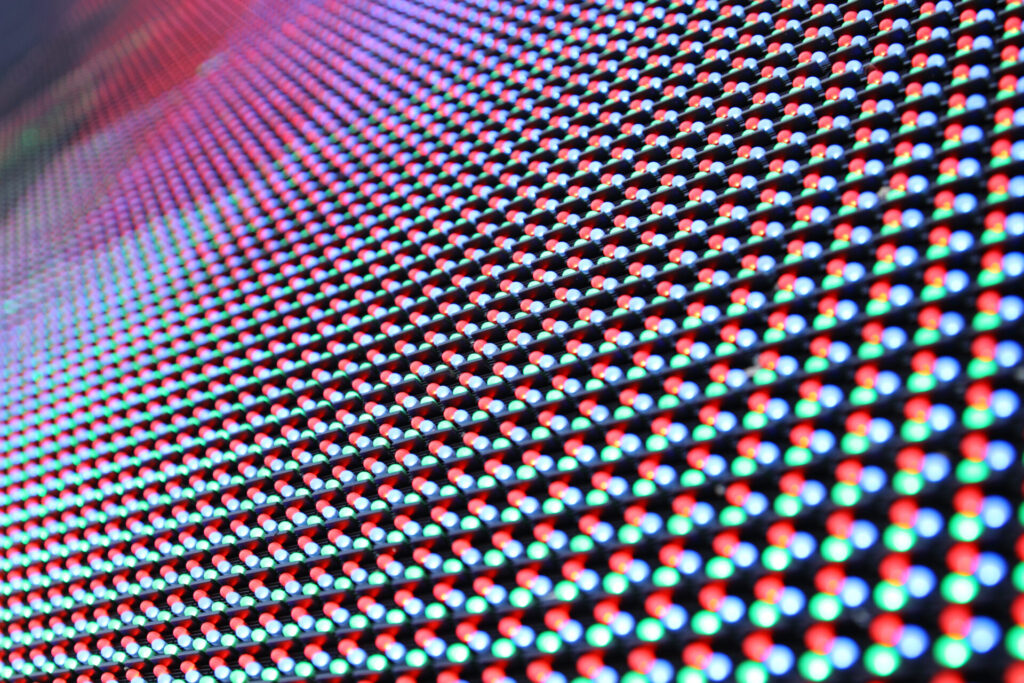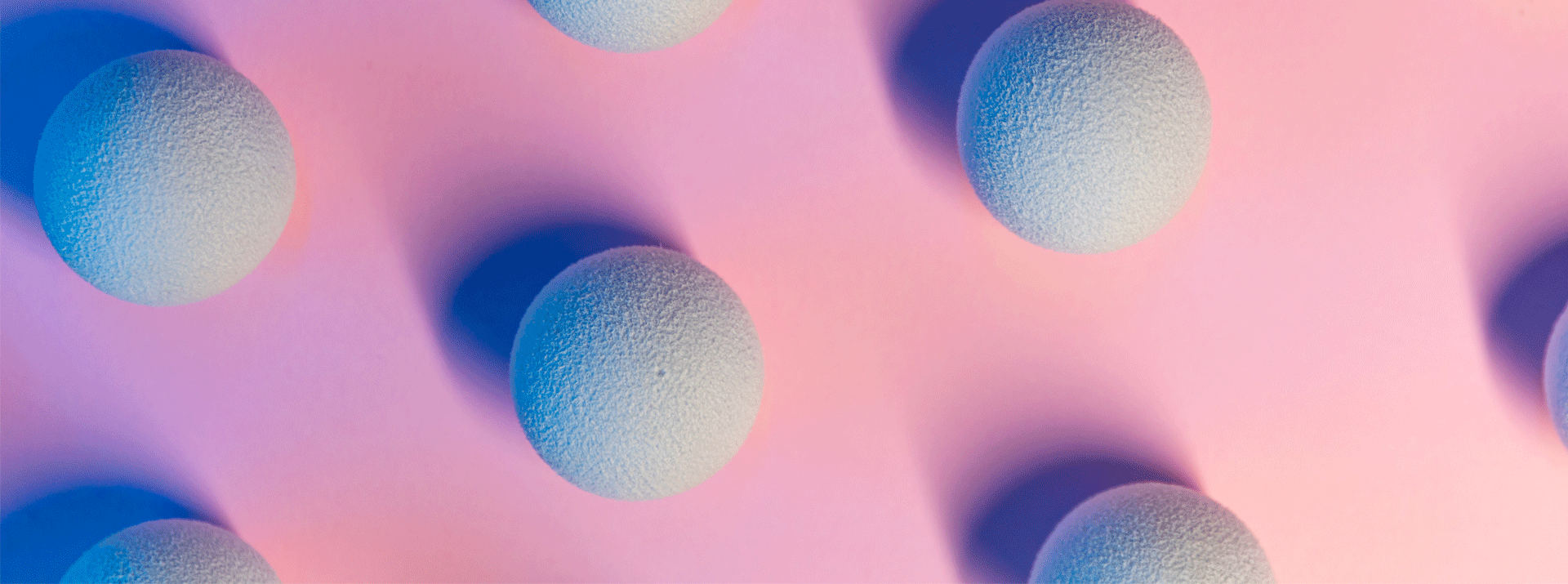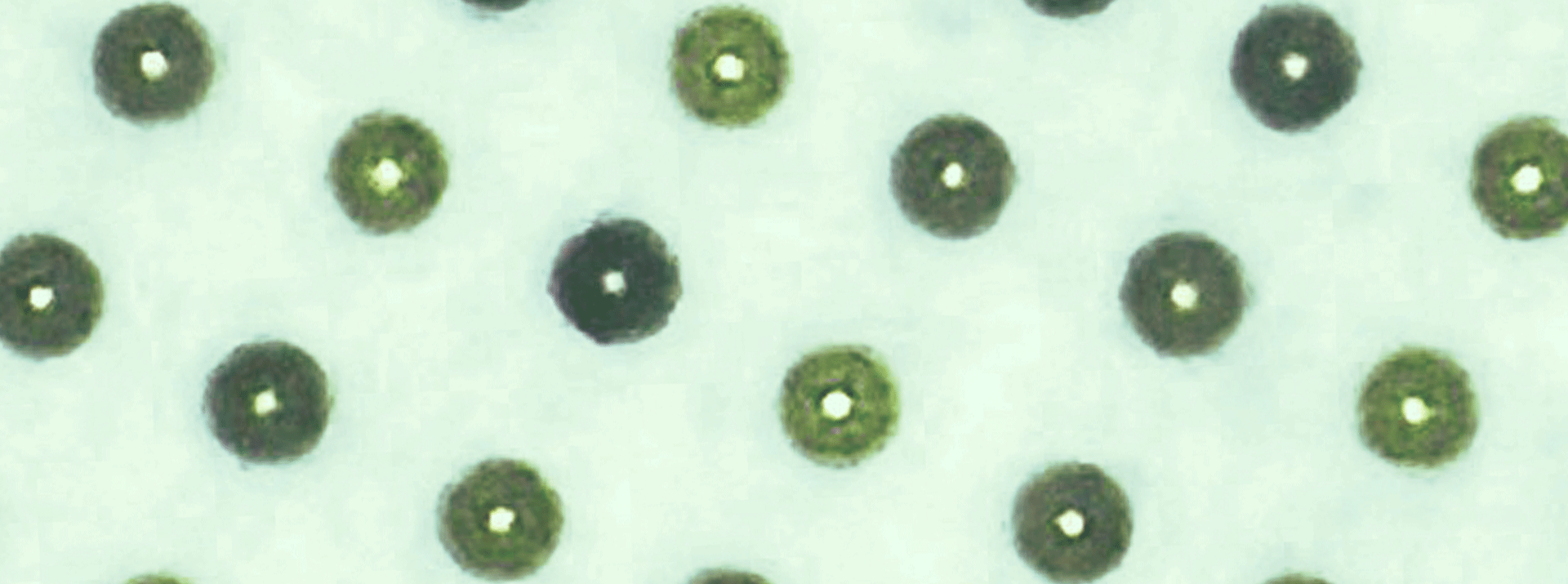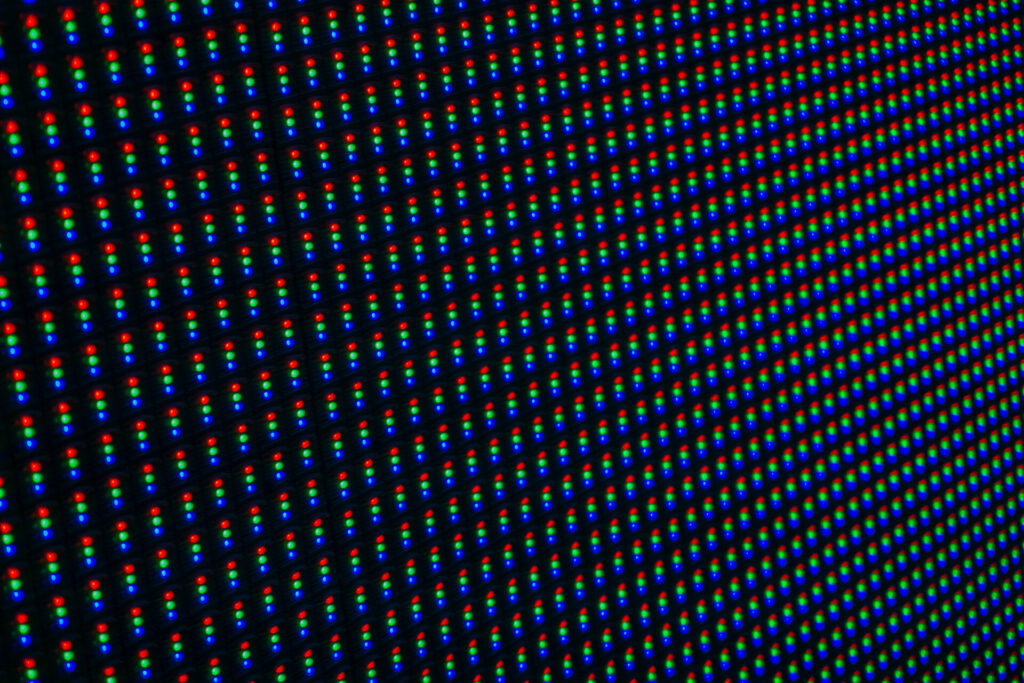
- Bonding Products
The Evolution of Displays and the Supporting Role of ACF
Contents
- 1 The evolution of display technology and the role of Anisotropic Conductive Film (ACF)
- 2 The development of liquid crystal displays (LCDs) and the contribution of ACF
- 3 The emergence of OLED displays and the adaptation of ACF technology
- 4 Flexible OLED and ACF’s technical innovation: achieving Flex on Plastic (FOP) and Chip on Plastic (COP)
- 5 ACF’s technical features and its contributions to display technology
- 6 ACF will support the display technology of tomorrow
The evolution of display technology and the role of Anisotropic Conductive Film (ACF)
From smartphones and tablets to TVs and computers, thin displays have become integral to our modern lives. The display technology used in these devices has undergone an impressive evolution since it first appeared, but the key role of Dexerials’ ACF in supporting that evolution may not be widely known.
ACF has been fundamental to advancing display technologies, from LCD to OLED and flexible OLED. Let’s explore how display technology has evolved and examine ACF’s vital contribution to this journey.
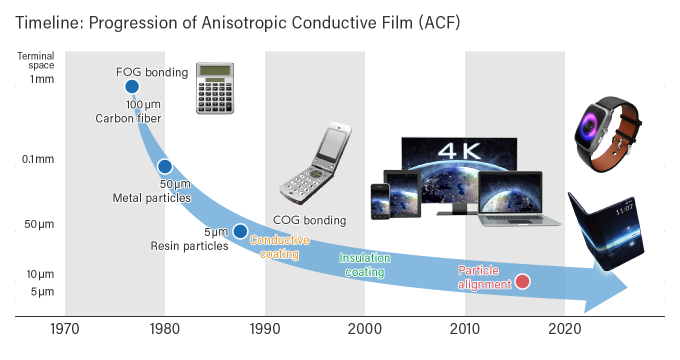
The development of liquid crystal displays (LCDs) and the contribution of ACF
The LCD story began in the 1960s with a breakthrough discovery: liquid crystals could be used to create visual displays. This technology found its first commercial applications in calculators and wristwatches during the 1970s, before expanding to larger formats like laptops, TVs, and monitors in the 1990s.In LCD’s evolution, the push toward thinner profiles and higher resolutions was paramount.
ACF proved instrumental in this development by providing reliable circuit connections. The technology delivers not only ultra-thin connections but also ensures robust bonding, exceptional reliability, and effective electrical isolation between adjacent circuits.
Its versatility extends to various substrates, enabling connections for Tape Carrier Package (TCP) and Chip on Film (COF) package signal outputs to displays, while also supporting Chip on Glass (COG) driver IC implementation. The adoption of ACF has enabled higher resolutions through the miniaturization of circuits and contributed to thinner and lighter devices through the miniaturization of driver ICs. LCD technology has developed rapidly since the discovery of the principles behind the use of liquid crystals for visual display, but it may not have been possible to achieve the modern thin and high-resolution displays without the evolution of ACF technology.
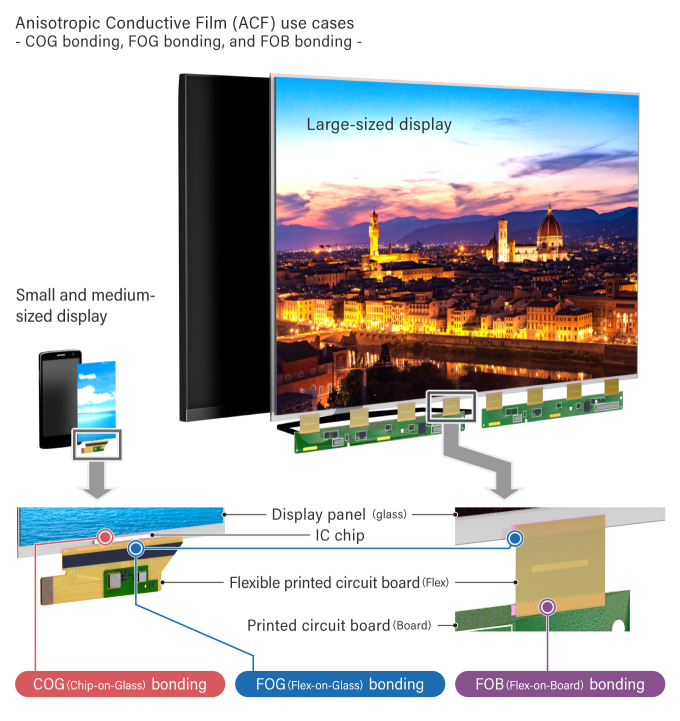
The emergence of OLED displays and the adaptation of ACF technology
As LCD technology matured, OLED emerged as the next generation of display technology. After the Eastman Kodak Company announced the fundamental principles behind OLED in 1987, elements that emit their own light were used to achieve display technology that featured higher contrast than conventional LCD, wide viewing angles, thinness, and lightweight. However, initial adoption was hampered by manufacturing costs and technical hurdles.
Several factors contributed to OLED’s initially slow market penetration: prohibitive production costs, limited lifespan of blue organic electroluminescent elements, and image retention issues with static content. Additionally, the complexity of OLED manufacturing processes and low yield rates presented significant challenges for mass production.OLED technology made its breakthrough in the late 2000s, first appearing in small displays for smartphones and digital cameras as manufacturers overcame initial technical hurdles. As the technology’s advantages became increasingly apparent, OLED displays expanded into large-screen TVs and flexible displays. Throughout this evolution, ACF technology adapted and advanced to accommodate OLED’s unique electrical properties and circuit designs.
Flexible OLED and ACF’s technical innovation: achieving Flex on Plastic (FOP) and Chip on Plastic (COP)
The advent of flexible OLED displays, utilizing polyimide substrates, marked a breakthrough in creating durable, highly flexible foldable displays. While this technology opened new possibilities for flexible displays and wearable devices, it presented a significant challenge: maintaining reliable electrical connectivity with flexible substrates. To address this challenge, innovative mounting technologies emerged, including FOP (mounting flexible FPC directly On Plastic) and COP (mounting hard IC On plastic substrate).
These solutions rely heavily on ACF technology to create secure connections between flexible plastic substrates and rigid driver ICs. Dexerials’ newly developped, ArrayFIX, represents a significant advance in this field. This particle-arrayed ACF technology delivers exceptional connection reliability in an extremely small area while maintaining electrical isolation between adjacent electrodes. By ensuring precise, dependable connections even in challenging environments, ArrayFIX has dramatically enhanced flexible OLED performance.
ACF’s technical features and its contributions to display technology
ACF technology stands as a cornerstone in advancing high-definition display technologies across LCD, OLED, and flexible OLED platforms. Its distinctive capabilities include ultra-fine pitch connections at pitches below 100 micrometers and remarkable adaptability to various electrode materials. This versatility in accommodating different conducting materials, from ITO electrodes to metal electrode, has been instrumental in pushing the boundaries of display resolution and performance across all display technologies.
The innovative ArrayFIX technology showcases the continued evolution of ACF. Its precise particle alignment capability enables optimized connections for specific electrode materials and pitches, driving further improvements in display performance. The technology’s success with both FOP and COP applications has made it essential for the advancement of flexible OLED technology.
- The benefits & background of ArrayFIX, a particle-arrayed ACF – TECH TIMES | Technical information media for engineers (dexerials.jp)
- The secret of ArrayFIX, particle-arrayed ACF – TECH TIMES | Technical information media for engineers (dexerials.jp)
ACF will support the display technology of tomorrow
Throughout the display industry’s evolution from LCD to OLED and flexible OLED, ACF has been a crucial enabler of technological progress. Its contributions have been fundamental to achieving higher resolution displays, enhanced designs, and reliable connectivity solutions.Looking ahead, Dexerials remains committed to advancing ACF technology to support emerging display technologies such as microLED and silicon OLED, continuing our mission to enhance products that enrich our daily lives.
- SHARE
 Back to top
Back to top  Contact us
Contact us 



